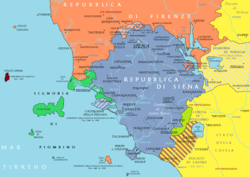
The province of Grosseto is a province in the Tuscany region of Italy. Its capital is the city of Grosseto. As of 2013 the province had a total population of 225,098 people.

Grosseto is a comune in the central Italian region of Tuscany, the capital of the province of Grosseto and of the Maremma. The city lies 14 kilometres from the Tyrrhenian Sea, at the centre of an alluvial plain on the Ombrone river.

Ombrone was a department of the First French Empire in what is now Italy. It was named after the river Ombrone. It was formed in 1808, when the Kingdom of Etruria was annexed directly to France. Its capital was Siena.
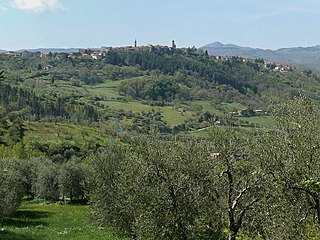
Castel del Piano is a town and comune (municipality) of Province of Grosseto in the Tuscany, central Italy.

Castiglione d'Orcia is a comune (municipality) in the Province of Siena in the Italian region of Tuscany, located about 90 kilometres (56 mi) southeast of Florence and about 40 kilometres (25 mi) southeast of Siena, in the Val d'Orcia, not far from the Via Cassia.
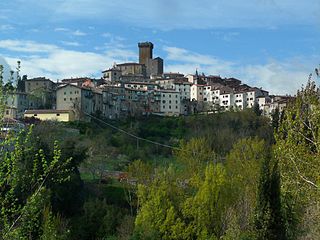
Arcidosso is a comune (municipality) in the Province of Grosseto in the Italian region of Tuscany, located about 100 kilometres (62 mi) south of Florence and about 35 kilometres (22 mi) northeast of Grosseto and near the town of Montalcino.

Roccalbegna is a comune (municipality) in the Province of Grosseto in the Italian region Tuscany, located about 110 kilometres (68 mi) south of Florence and about 35 kilometres (22 mi) east of Grosseto.
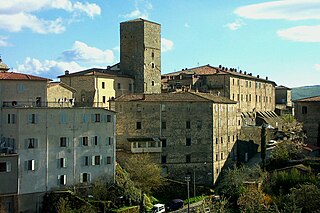
Santa Fiora is a comune (municipality) in the province of Grosseto, in the Italian region of Tuscany, located about 110 kilometres southeast of Florence and about 40 km (25 mi) east of Grosseto. Santa Fiora borders the following municipalities: Abbadia San Salvatore, Arcidosso, Castel del Piano, Castell'Azzara, Piancastagnaio, Roccalbegna, and Semproniano. It is one of I Borghi più belli d'Italia.
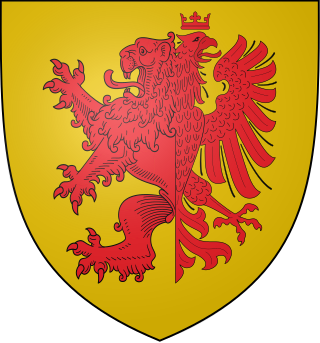
The Aldobrandeschi family was an Italian noble family from southern Tuscany.

Istia d'Ombrone is a small town in southern Tuscany, Italy, a frazione of the comune of Grosseto.
Lorenzo Porciatti was an Italian architect and architectural restorer, active mainly in his native Tuscany.

Bagnore is a village in Tuscany, central Italy, administratively a frazione of the comune of Santa Fiora, province of Grosseto. At the time of the 2001 census its population amounted to 420.

Buriano is a village in Tuscany, central Italy, administratively a frazione of the comune of Castiglione della Pescaia, province of Grosseto. At the time of the 2001 census its population amounted to 257.

Marsiliana, known also as Marsiliana d'Albegna, is a village in Tuscany, central Italy, administratively a frazione of the comune of Manciano, province of Grosseto. At the time of the 2001 census its population amounted to 246.

Montemerano is a village in Tuscany, central Italy, administratively a frazione of the comune of Manciano, province of Grosseto. At the time of the 2001 census its population amounted to 438. It is one of I Borghi più belli d'Italia.

Montorio is a village in Tuscany, central Italy, administratively a frazione of the comune of Sorano, province of Grosseto, in the tuff area of southern Maremma.

Selva is a village in Tuscany, central Italy, administratively a frazione of the comune of Santa Fiora, province of Grosseto. At the time of the 2001 census its population amounted to 100.

Rocchette di Fazio is a village in Tuscany, central Italy, administratively a frazione of the comune of Semproniano, province of Grosseto. At the time of the 2001 census its population amounted to 19.

Sasso d'Ombrone is a village in Tuscany, central Italy, administratively a frazione of the comune of Cinigiano, province of Grosseto. At the time of the 2001 census its population amounted to 300.

The Walls of Grosseto, known also as Medicean Walls, are a series of defensive brick walls surrounding the city of Grosseto in Tuscany, Italy.
